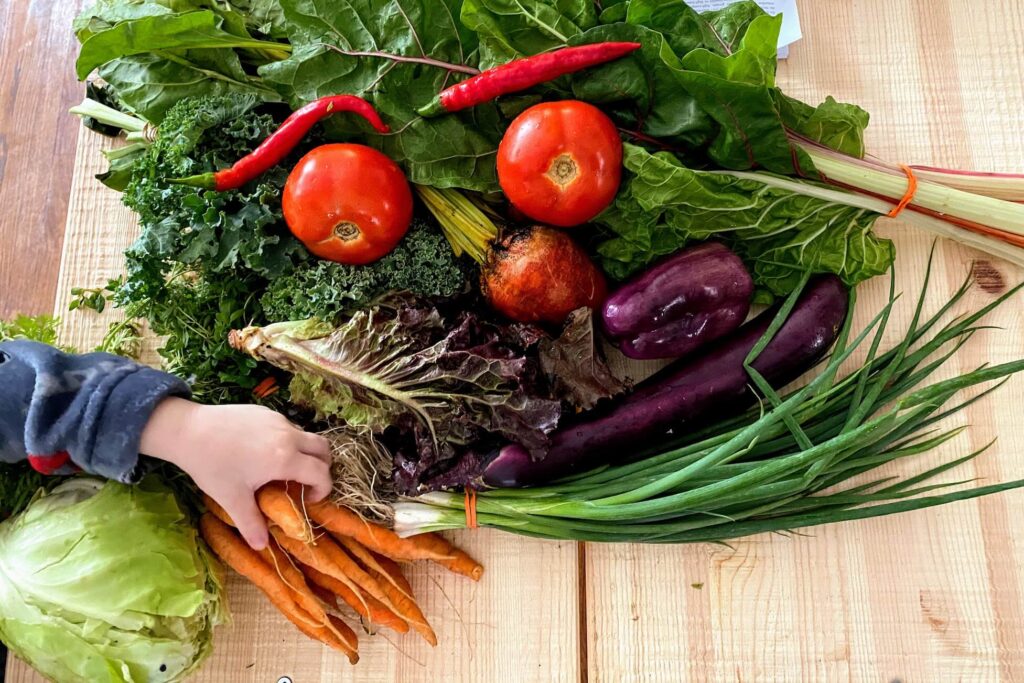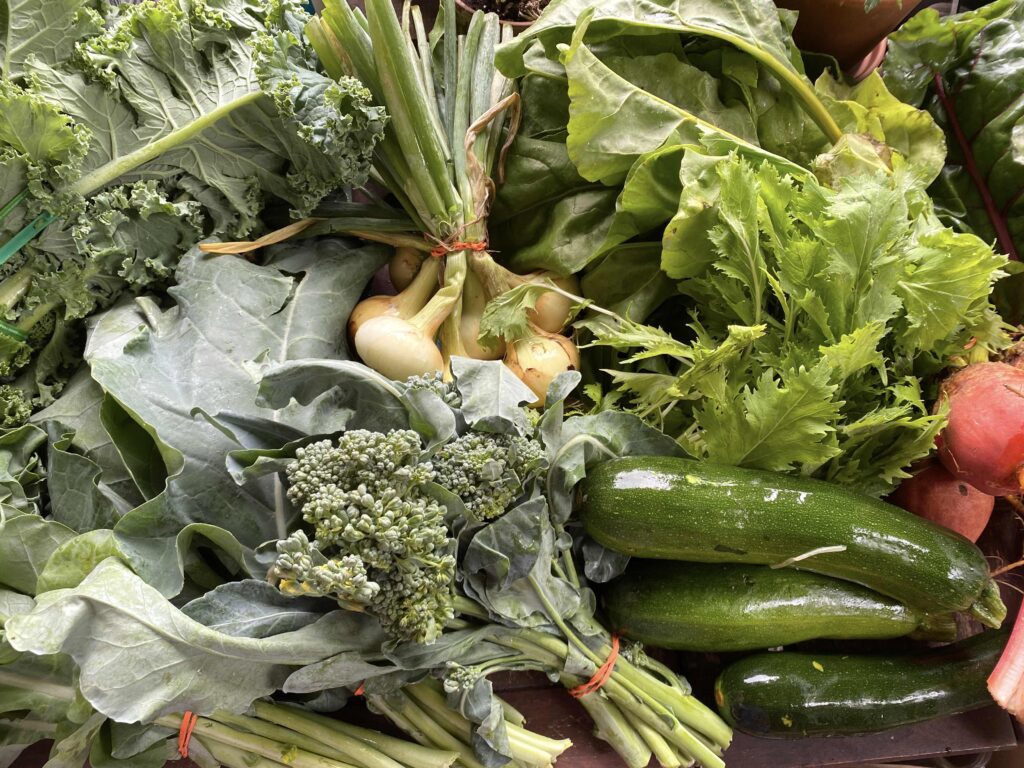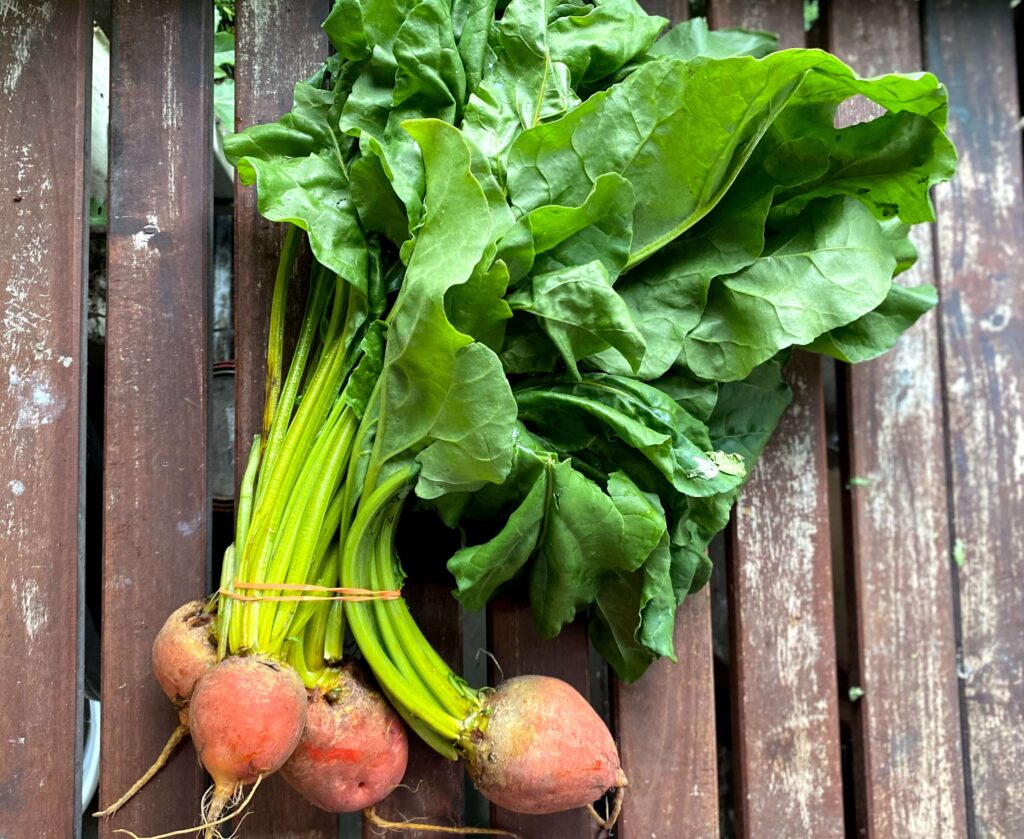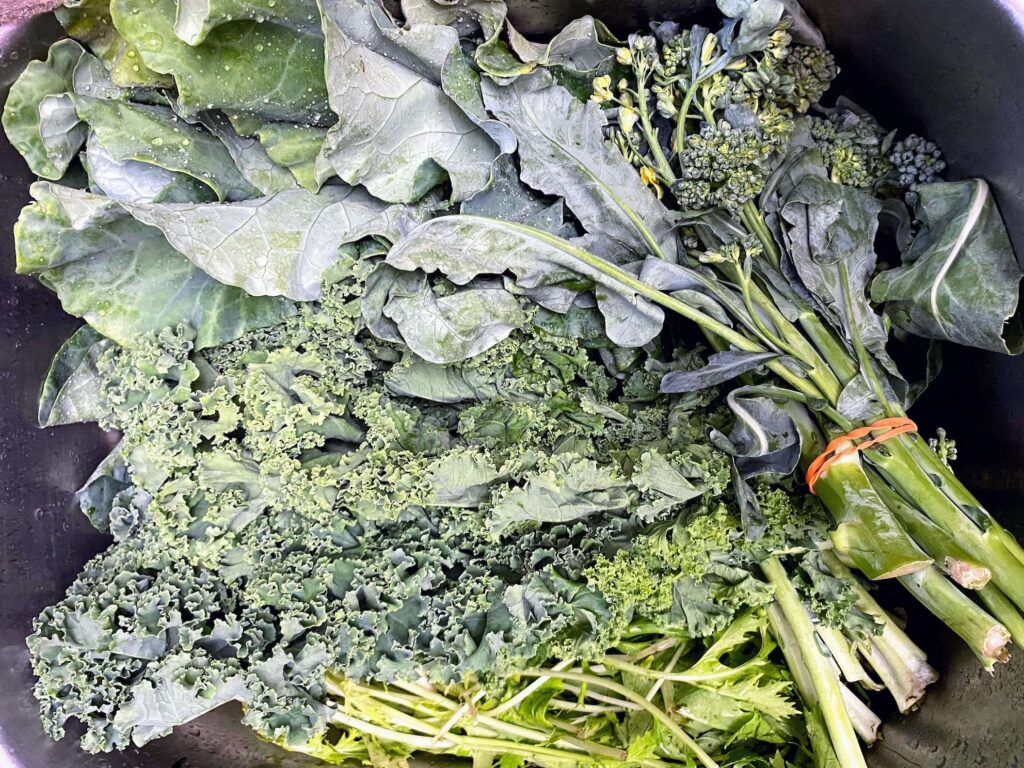FoodShare Dismantling White Supremacy Box
We have been big fans of FoodShare‘s work for years, and the programs and initiatives they do in the city. As soon as they started offering a home delivery veggie box via the GoodFoodBox a few years ago, we started ordering one. The Dismantling White Supremacy box was formerly known as the Advancing Food Justice Box, but whatever the name is, the goals have always been the same. It was designed with “the understanding that Black, Indigenous and racialized communities experience higher rates of food insecurity in Toronto, and remain under-represented and under-supported in farming.” The goals are the same, because dismantling white supremacy advances food justice. Elegant in its interconnection isn’t it?
The aim of this box has always been to source produce from farms that are led, run, or owned by racialized folks – as well as highlight their work, and financially support and showcase farms and programs run by people that are disadvantaged by current food systems. We are a family of people that care where their food comes from, thinking about ethical food systems is integrated in our, and specifically my veganism – that includes the treatment and experience of the people involved in growing and harvesting. I like knowing who is involved and that they are treated with respect and dignity – if you care about that too – you may want to check out Harvesting Freedom and the Food Empowerment Project and supporting the work and advocacy they both do.
Information about who grew and harvested food can be hard to find out sometimes, but buying directly from the people involved, or with some vetting from an organization that is really working on doing good like FoodShare, made this an exciting premise from day one.

I really like the idea of getting produce from someone local – but I’m not always able to go to farmers markets to pick things up on my own, and after our usual city-CSA Crooked Cucumber shut down a couple of years ago to do more local consulting work, we’ve not signed up for any others. So this box is a great way to do a lot of things we are into. It helps us talk about food justice initiatives and about people involved in the food system with our child, while also talking about what kinds of things are in season and growing in our area and inspiring and excitement around that, while also having some of the most delicious vegetables we eat in the year, delivered right to our door. So many good things!
All produce is grown nearby, and there are a few farmers involved most with social media profiles we follow year round. The following list is subject to change, but a lot of now familiar (to us) farms are on this list:
- Afri-Can FoodBasket
- Black Creek Community Farm
- Deeper Roots Farms
- Healing Hands Farm
- School Grown
- Zawadi Farm

So this week we got our first Dismantling White Supremacy box of the season, and I’m of course excited about it all. If you got a box, your box may vary depending on what was available at the time, but I’m going to list what was in ours:
- 1 bunch beets
- 2 bunch broccoli leaves
- 1 bunch broccolini
- 1 bunch red chard
- 1 bunch kale
- 1 mizuna
- 1 bunch onions
- 3 zucchini
But now what? We’ve got all this great produce, what should we do with it?
I have a few ideas! One of my favourite easy take aways from Vegetable Kingdom, a wonderful cookbook from Bryant Terry was using beet greens with kale to make crispy oven roasted green chips – he opened up a world of baked greens for me, and I highly recommend you check out his book! Before this, my only use for beet greens (if they were in good condition – which is not always the case from grocery stores) was to chop them up and throw them in to beet soup! Not anymore.

Beet soup (at least for me) seems like an obvious choice when you’ve got beets on the go, but with beets this fresh and lovely I’d rather do something that really celebrates them in their near original form. Something like this Beet and Citrus Salad with Pine Nut Vinaigrette from Kenji Lopez-Alt (a chef that isn’t vegan, but does vegan food really well – with a solid respect for a good flavourful vegetable) would be a great addition to a summer menu (we could even throw in some of the mizuna to this one. (or make this Spicy Tofu Soup with Mizuna Greens)
Another beet root recipe I’m excited to try is Savory Spin’s Sri Lankan Beetroot Curry. It looks beautifully rich and full of flavour.
With several zucchini to play with, I’m really feeling it’s potential in replacing pasta – in both this great Zucchini Lasagna with Tofu Ricotta dish from Vegan Richa, or this Pad Thai Zucchini Noodle dish from Okonomi Kitchen. Back when I worked in the Yorkdale area, and Rawlicious still existed – they had this fantastic Zucchini noodle pad Thai that I’d get for lunch occasionally, and I’m looking forward to tap into that feeling again sometime soon.
I recently saw a great looking dish of blackened broccolini on the menu at a new restaurant, and it sounded very good – and greens are often just perfect roasted. There are lots of options online for that, but this Blackened Broccolini and Bittersweet Almonds on Toast looked like a nice option for lunch.
There were two bunches of greens that on first glance I just thought were collards – but they had a different leaf pattern – that’s because they were broccoli leaves! They are tender and full of options – you can chop and steam them, but I’m aiming to blanche and stuff them with something. I have lots of them, so one major option is pretending they are grape leaves and stuffing them with rice and vegetables. Another thing I would like to try is using the broccoli leaves to make this Jerk Tofu wrapped in Collard Leaves from the aforementioned Vegetable Kingdom cookbook.
Besides oven baked kale chips or a nicely massaged kale salad, there are few things I think of when I see kale – I think of making Mbowa from In Bibi’s Kitchen – which can be made from a variety of dark leafy greens. It’s worth taking a look at the cookbook in full, but if you want to check out part of it, there are several pages available on Google Books including the recipe for Mbowa. I feel like this would be a great recipe to use some of the chard greens.

And finally I’ll admit, I don’t love chard stems, or chard at all really – but I do like pickled things – two things I’ve done in the past with swiss chard is turned it into a chard kimchi following a regular vegan kimchi recipe like this one from Maangchi, and just replacing the apa with chard, or these pickled chard stems from Love and Lemons. Another option that I like to boil things to heck – and I liked the look of this black-eyed peas and chard stew (fassoolia wselek) from Taste of Beruit. I am also curious about this Swiss chard-Tahini Dip from Maydon Restaurant.
If you’re looking for some ideas of what to do with your delicious food box this week, I hope this will be helpful for some of the weeks ahead. We’re subscribed to the box on a weekly basis, and I’m looking forward to get cooking! If you’d like to see how some of these turn out, I will likely post them on instagram or in subsequent blog posts.
1 Response